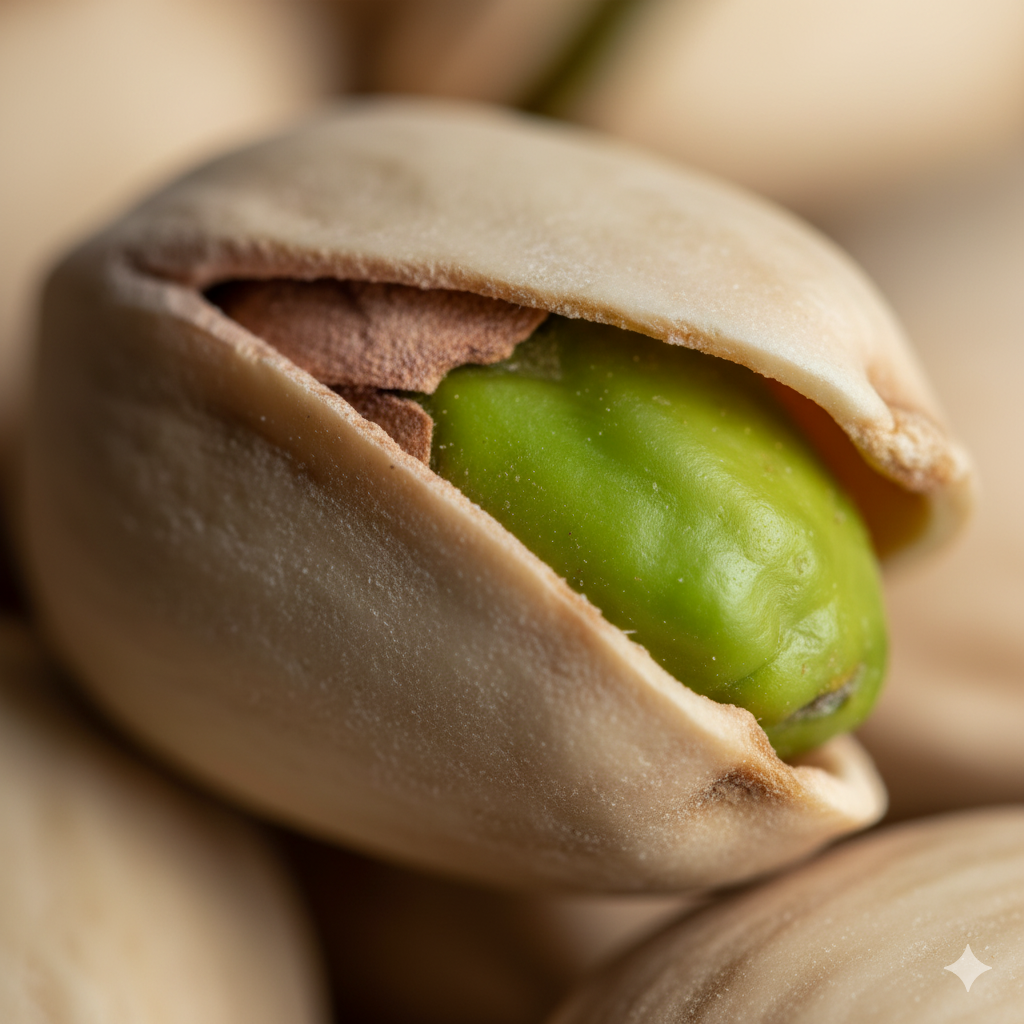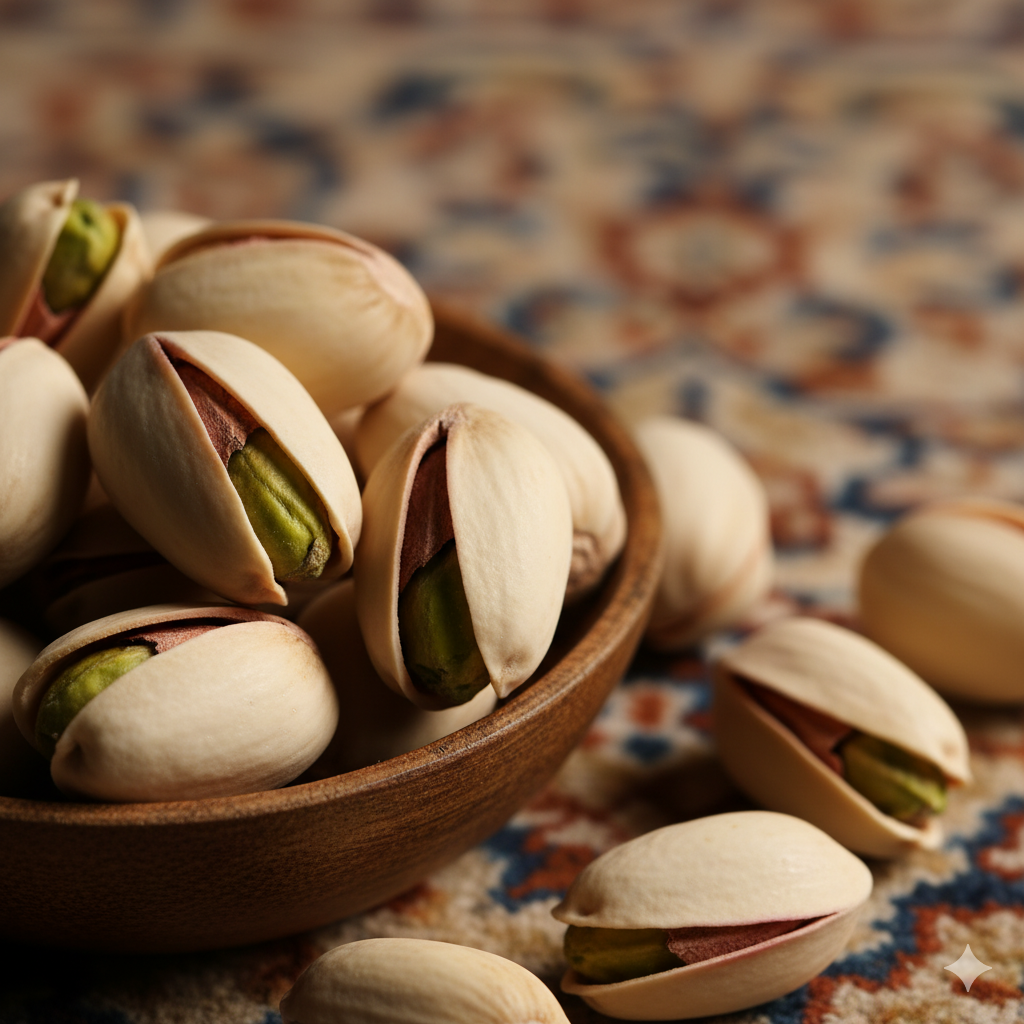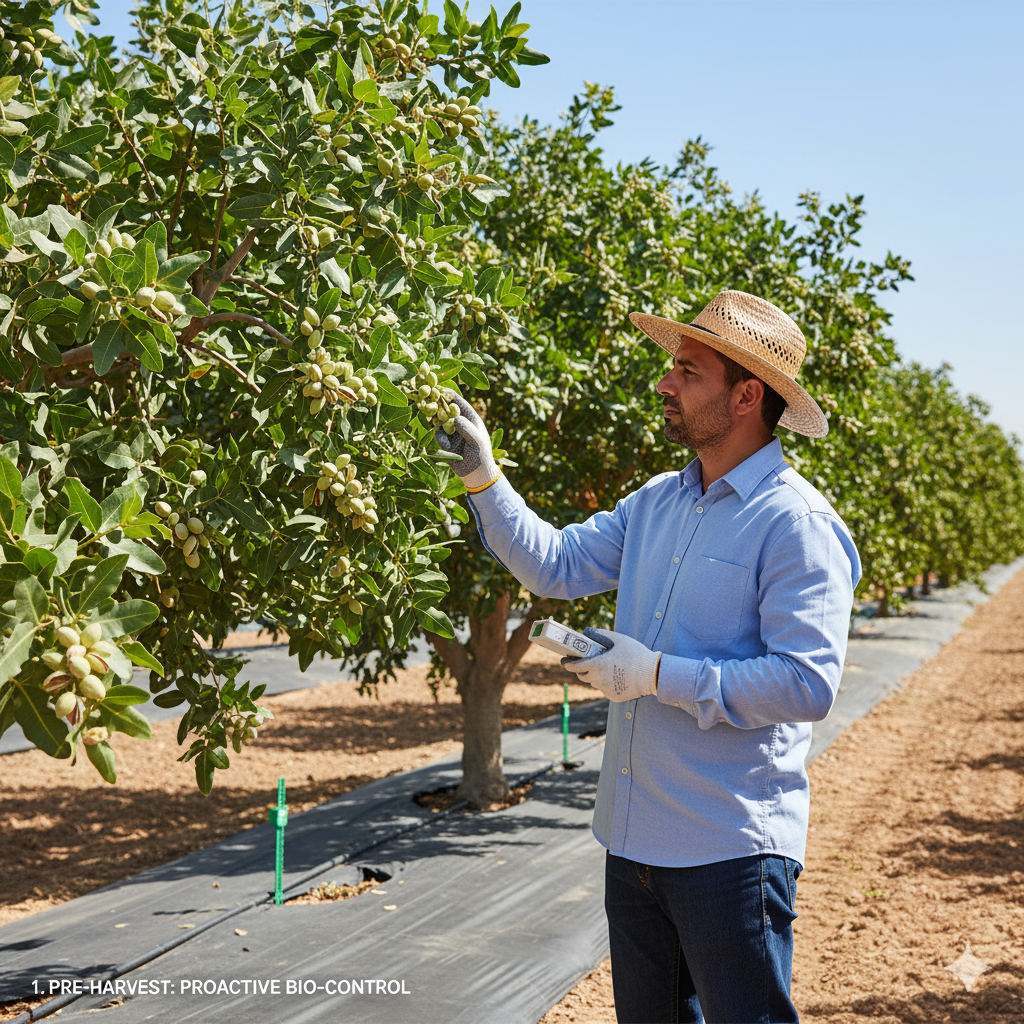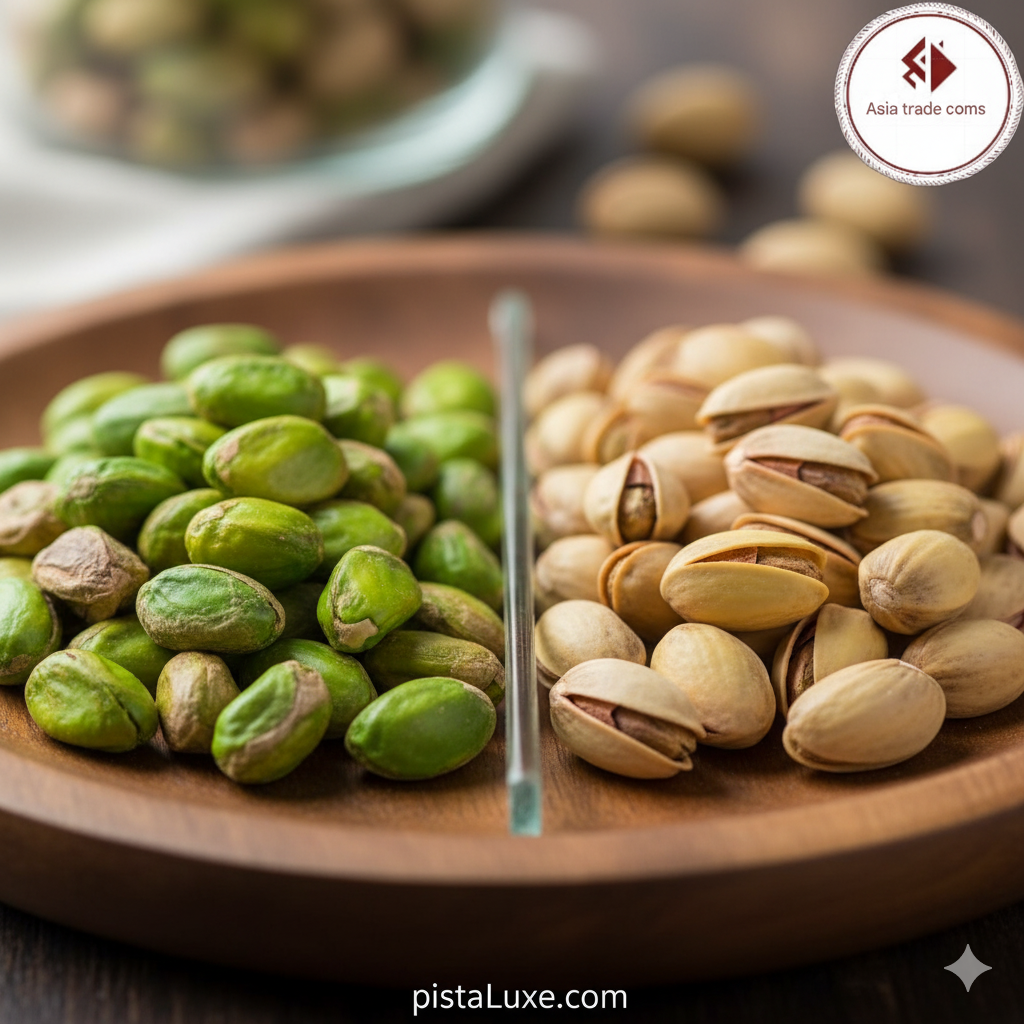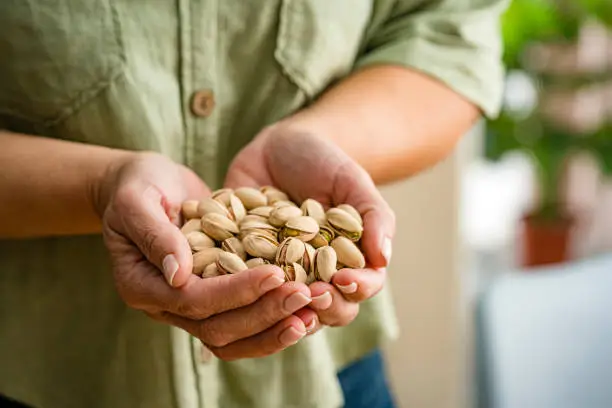
Introduction:
The pistachio tree, as one of Iran’s most valuable agricultural products, plays a significant role in the country’s economy. However, throughout its growth period, this tree faces numerous challenges, including pests and diseases that can seriously affect yield and product quality. The timely use of appropriate pesticides is a key solution to combat these threats and maintain the health of pistachio trees. In this comprehensive article, we will examine the types of pesticides used in pistachio orchards and how to select and apply them optimally.
Suggested Table of Contents for Article 1:
- Common Pests and Diseases of Pistachio Trees:
- Scale Insects
- Sunn Pest
- Wood-boring Insects
- Pistachio Psyllid
- Gummosis Disease
- Leaf Spot Disease
- Types of Pesticides Used in Pistachio Orchards:
- Organophosphorus Pesticides
- Pyrethroid Pesticides
- Carbamate Pesticides
- Neonicotinoid Pesticides
- Biological Pesticides
- How to Choose the Right Pesticide:
- Accurate Identification of the Pest or Disease
- Attention to the Pesticide’s Pre-Harvest Interval (PHI)
- Consideration of Climatic Conditions
- Selection of Environmentally Friendly Pesticides
- Proper Spraying Methods:
- Appropriate Spraying Time
- Use of Suitable Equipment
- Adherence to Safety Tips
- Environmental Considerations:
- Reducing Pesticide Consumption
- Using Alternative Methods
- Preserving Beneficial Insects

Part 1: Identifying Pests and Diseases of Pistachio Trees
Before delving into the discussion of pesticides, it is essential to recognize the common pests and diseases of pistachio trees. Familiarity with the symptoms and damage caused by each will facilitate the selection of appropriate pesticides. Some of the most important pests and diseases of pistachio trees include:
- Pests:
- Scale Insects: Characterized by a white, sticky coating on branches and leaves.
- Pistachio Stem Borers: Identified by small holes in the stems and the presence of lesions.
- Pistachio Mites: Damage to leaves, reducing photosynthesis.
- Pistachio Moths: Egg-laying and larvae feeding on leaves and fruits.
- Diseases:
- Root Rot: Causes weakening and death of the tree.
- Fungal Diseases: Such as leaf spot and canker, causing spots on leaves and lesions on the trunk.
- Viral Diseases: Diagnosis requires specialized testing.
Part 2: Types of Pesticides Used in Pistachio Orchards
In this section, we will introduce the types of pesticides according to the type of pest or disease, emphasizing safety and environmental considerations.
- Insecticides: For controlling various pests such as scale insects, stem borers, and moths.
- Fungicides: To combat fungal diseases such as leaf spot and canker.
- Miticides: For controlling mites.
- Systemic Pesticides: Pesticides that penetrate the plant tissue and help fight pests inside the plant.
- Contact Pesticides: Pesticides that only affect the surface of the plant.
Part 3: How to Select and Apply Pesticides Optimally
- Accurate Identification of the Pest or Disease: Prior to any pesticide use, accurate diagnosis of the pest or disease is essential.
- Selection of Appropriate Pesticide: Choose the appropriate pesticide based on the type of pest or disease.
- Attention to Pesticide Concentration and Dosage: Follow the instructions on the pesticide packaging carefully.
- Appropriate Spraying Time: Spraying time should be based on weather conditions and the life cycle of the pest or disease.
- Use of Safety Equipment: The use of masks, gloves, and protective clothing to prevent contact with pesticides.
- Environmental Considerations: Use pesticides with the least environmental impact.
- Pesticide Management: Proper hygiene and maintenance of pesticides to prevent environmental pollution.
Part 4: Preventing the Occurrence of Pests and Diseases
- Orchard Hygiene: Cleaning orchards of plant debris and insect carcasses.
- Planting Resistant Trees: Selecting and planting pistachio trees with high resistance to pests and diseases.
- Use of Organic Methods: Applying biological pest and disease control methods.
- Understanding the Life Cycle of Pests: Understanding the life cycle of pests for accurate timing of spraying.
Conclusion:
The correct and timely use of pesticides in pistachio orchards plays an important role in maintaining the health of trees and increasing crop yield. By recognizing common pests and diseases, selecting appropriate pesticides, and observing safety and environmental considerations, pistachio orchards can be effectively protected. This article is only a preliminary guide, and for more detailed information, it is recommended to consult with agricultural experts.
Contact Information for Dry Fruit and Pistachio Purchase:
For purchasing dry fruits and pistachios, please contact Mr. Ravanshad via WhatsApp at +989214773705.
Post a comment Cancel reply
Related Posts
Scientific Review of Greenhouse Pistachio Cultivation in Iran and Its Superior Nut Size Compared to Traditional Orchards
The average size advantage ranges from 12 % to 25 %, with top greenhouse selections…
Greenhouse-Grown Pistachios in Iran: Are They Really Larger Than Orchard-Grown Nuts?
Pistachio (Pistacia vera L.) is one of the most important horticultural crops in Iran, with…
Pistachios and Regulation of Gut Microbiome Balance: A Prebiotic Approach to Mitigate Digestive Challenges in the Ketogenic Diet
Practical Recommendation (How many per day): To optimize the prebiotic effects and ensure adequate fiber…
Pistachios (Pistacia vera) as a Functional Component of the Ketogenic Diet: Analysis of Macronutrients, Metabolic Effects, and Clinical Considerations
📞 Contact Number for Purchase and OrderingFor purchasing pistachios and placing an order, please contact…


